Categories
- Argentina
- Chile
- Antarctica
- Easter Island
- Falklands (Malvinas)
- Bolivia
- Peru
- Uruguay
- Paraguay
- Brazil
- Venezuela
- Colombia
- Ecuador
- Galapagos
- Panama
- Costa Rica
- Cuba
- Nicaragua
- Honduras
- El Salvador
- Guatemala
- Belize
- Mexico
- Latin American Xmas
Pages
- Street Art of Buenos Aires
- A week in Buenos Aires
- The Jesuit Missions in South America
- Contact Us
- Map of Central America
- First week in Latin America – October 2009
- Home Page
- Map of South America
Archives
- October 2011 (3)
- September 2011 (9)
- August 2011 (10)
- July 2011 (7)
- June 2011 (6)
- May 2011 (11)
- April 2011 (10)
- March 2011 (4)
- February 2011 (5)
- January 2011 (6)
- December 2010 (6)
- November 2010 (4)
- October 2010 (8)
- September 2010 (5)
- August 2010 (7)
- July 2010 (5)
- June 2010 (6)
- May 2010 (6)
- April 2010 (7)
- March 2010 (6)
- February 2010 (9)
- January 2010 (4)
- December 2009 (8)
- November 2009 (5)
- October 2009 (2)
The Inca Trail
30th June 2010
The first day of the Inca Trail was relatively easy compared to what was to come. The only problem was waddling away after chef Alberto´s 3 course, 5 star lunch. It was obvious that Katie had made the right decision choosing the trekking company Llama Path.
.
Our guide Santiago, was a wealth of knowledge about the Inca and the various sites we passed on the trail as well as the flora and fauna. He made the stories come alive. ¨The Red Army¨, 9 porters together with the chef all dressed in red, carried our supplies. Each day when we arrived into camp, we were greeted with applause, even though we should have been applauding them for their effort. In the morning we were woken up with a cup of coca tea in our tents and hot water for a wash.
.
The second day was a slow trudge up and over Dead Woman´s Pass at 4215 metres, no easy feat, followed by 800 metres of descent. On day 3 we crossed a lower pass at 4000 metres with more Inca sites, walking on original Inca road. The trail passes through cloud forest and higher up, open grassland. Many wild flowers and orchids can be seen as well as bromeliads and tillandsias. The stunning views of the surrounding mountains got better and better. Although 500 people per day are allowed on the trail (200 trekkers and 300 porters and guides), most of the time we had the path to ourselves.
.
On day 4 we passed more Inca sites. Stone water fountains are still running after 500 years. Stone terraces rise steeply up the mountainside. On reaching the Sun Gate, we had our first glimpse of Machu Picchu, the magnificant Inca city beneath the Huayna Picchu mountain. We had made it!
.
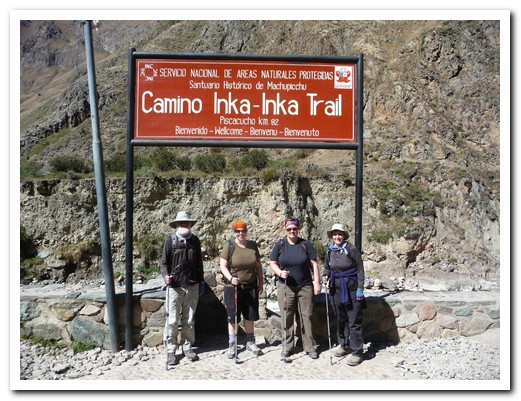
Starting the Inca Trail

Q´anabamba Inca site
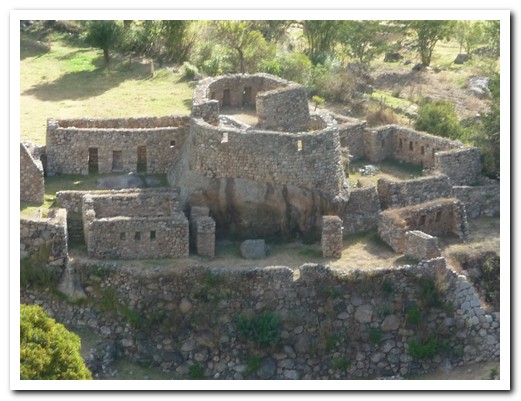
Q´entimarka Inca site
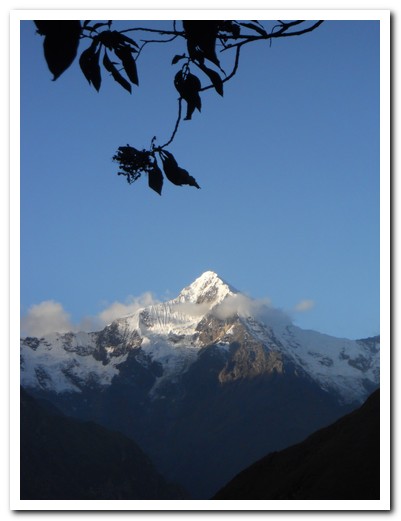
Mountain Veronica
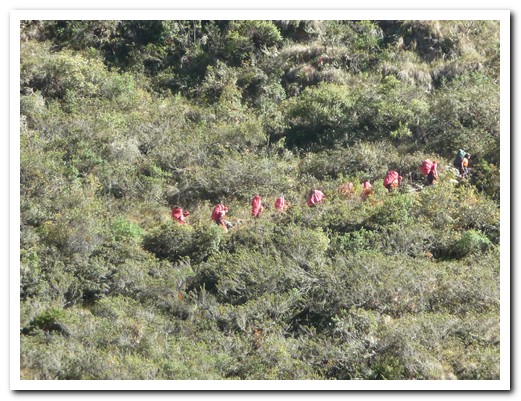
The Red Army on the move

Shady path
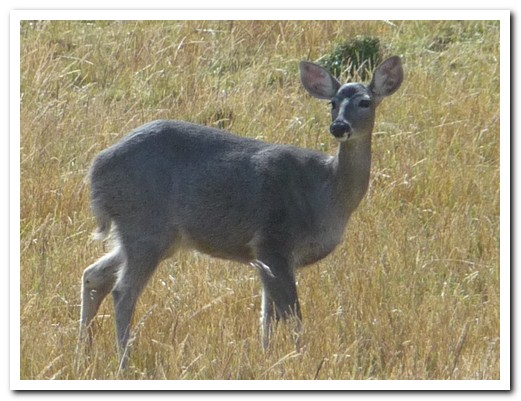
Wild deer grazing
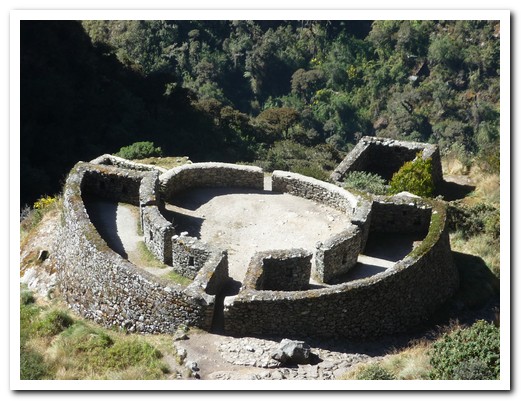
Runkuraqay Inca site (in the shape of the Inca knife)
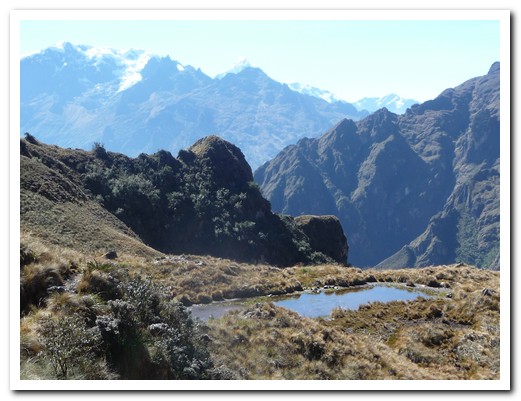
High altitude lake
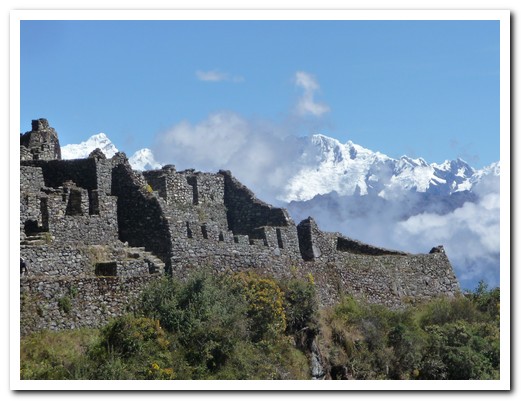
Sayaqmarka Inca site
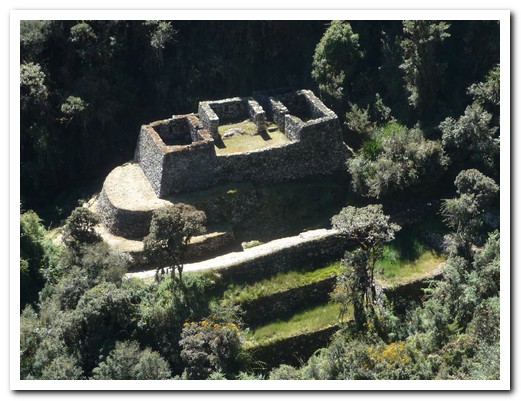
Qonchamarca Inca site
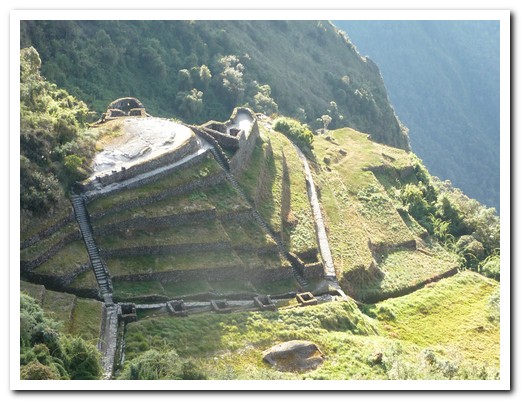
Phuyupatamarka Inca site
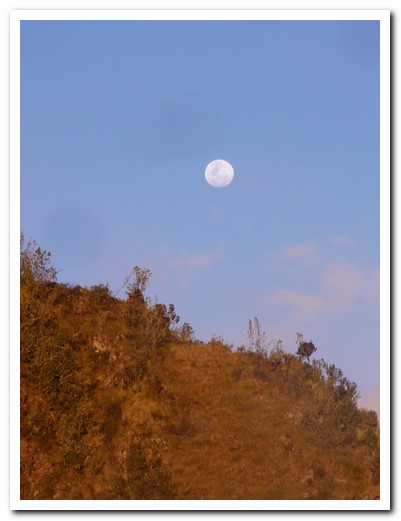
Full moon on the trek
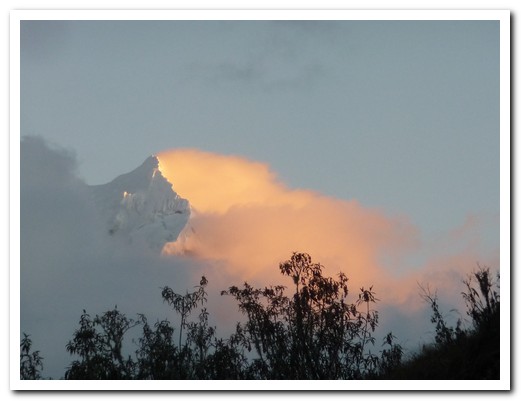
Sunset from night 3 camp
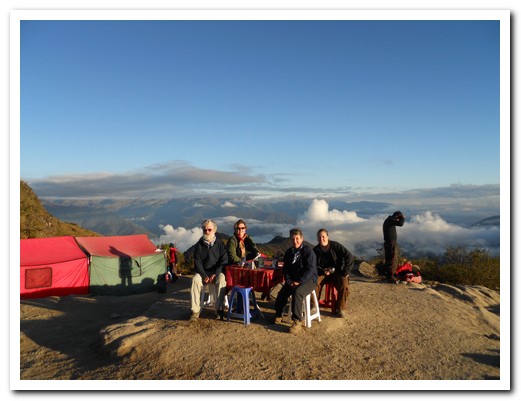
Breakfast on top of the mountain
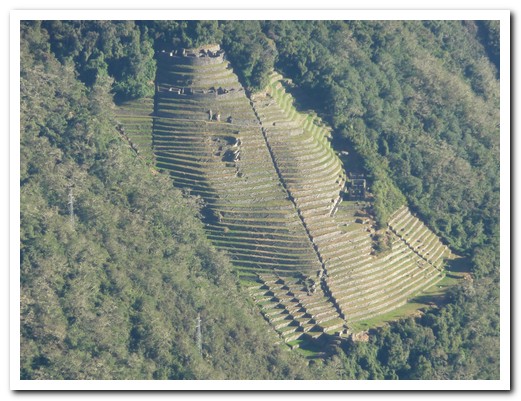
The terraces of Intipata
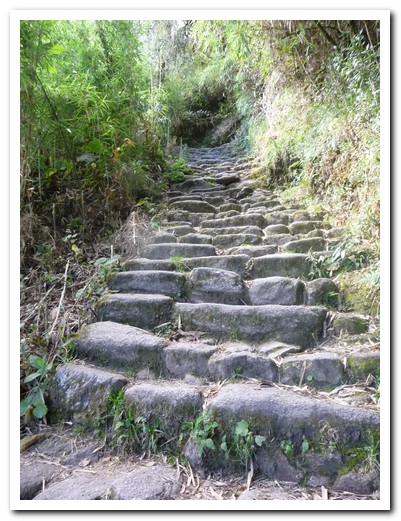
There are thousands of old worn steps on the Inca Trail
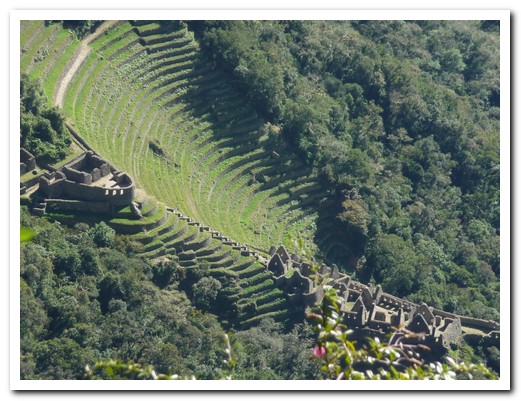
Wiñaywayna Inca terraces
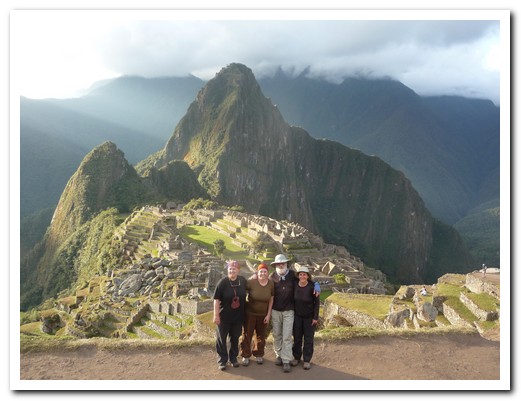
Machu Picchu - we made it!
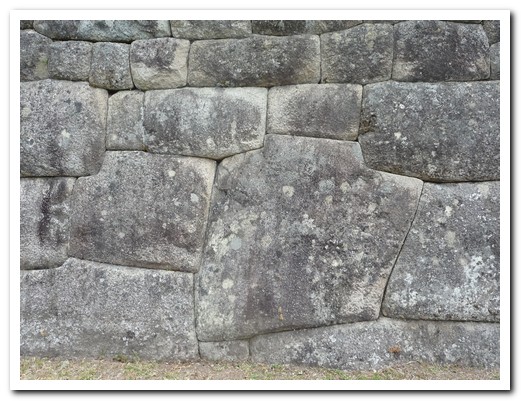
Fine stone walls used on the important buidings
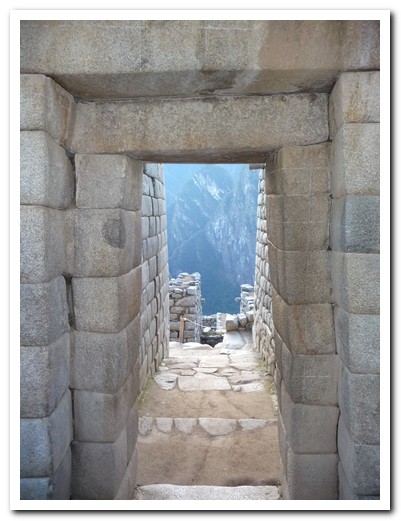
Double doorway into the kings chamber
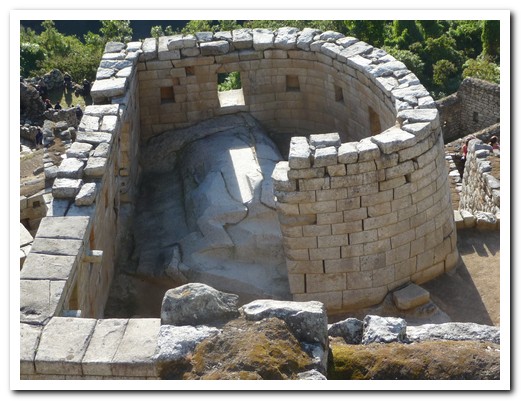
The sun shines through onto altar in the temple of the sun

Machu Picchu llama
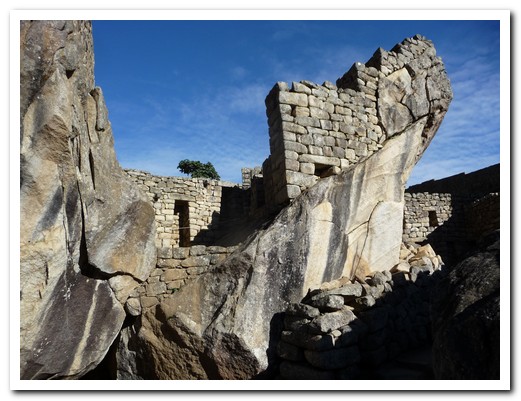
Temple of the Condor
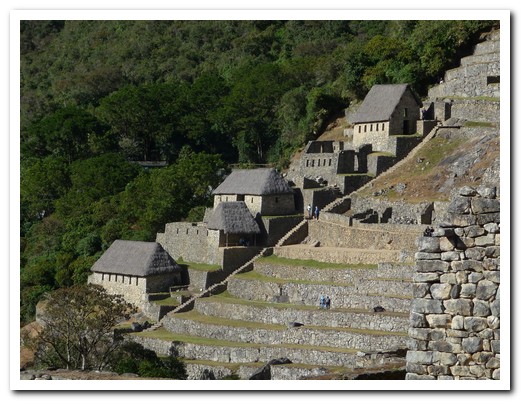
Row of store houses in Machu Picchu
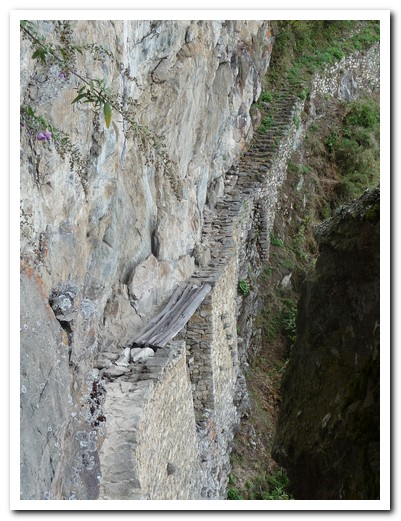
Inca bridge - pull up the planks to prevent enemy entering
Cusco and the Sacred Valley
28th June 2010
Cusco, founded around 1100AD, was the capital and spiritual centre of the Inca Empire until the Spanish arrived in 1532.
.
Today Cusco contains a beautiful mix of Inca and Spanish architecture. As we were walking the Inca Trail we missed the annual Inti Raymi Festival (Festival of the Sun) in Cusco but were lucky enough to watch the dress rehersal a few days before without the crowds. Apart from being a lovely place to stay, Los Niños Hotel uses the profit to feed and care for some 600 street children in Cusco.
.
The fertile Urubamba River Valley or Sacred Valley close to Cusco has colourful markets and many Inca ruins.
.
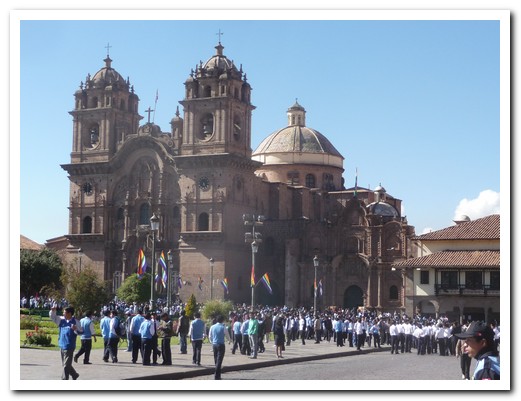
Jesuit Church (Iglesia de la Companía de Jesús) on the Plaza
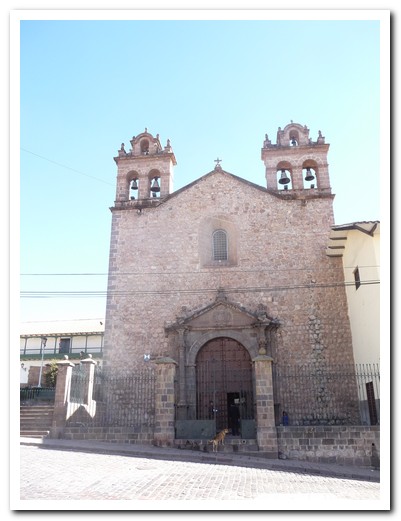
Monasterio Santa Teresa
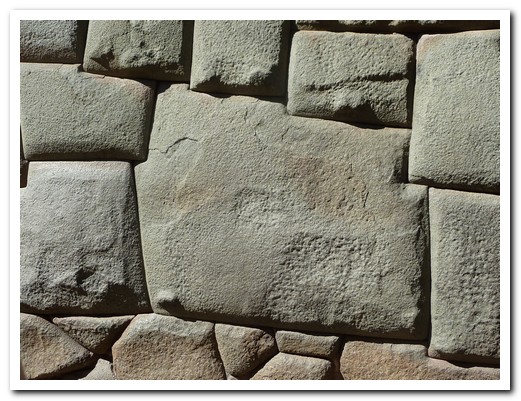
The twelve sided stone in an Inca wall in Cusco
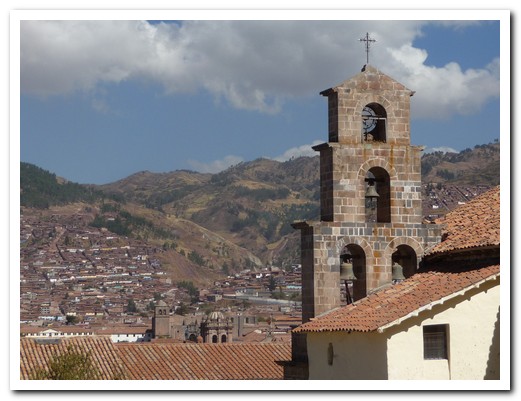
Iglesia de San Blás
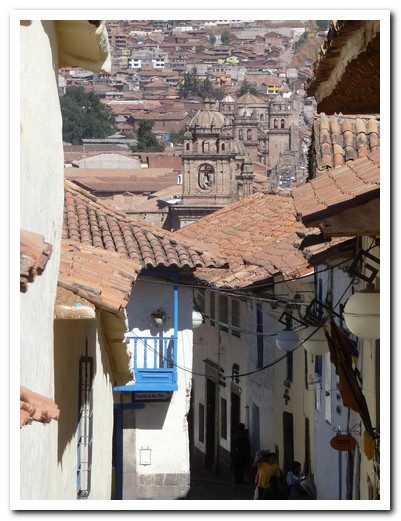
Cusco street
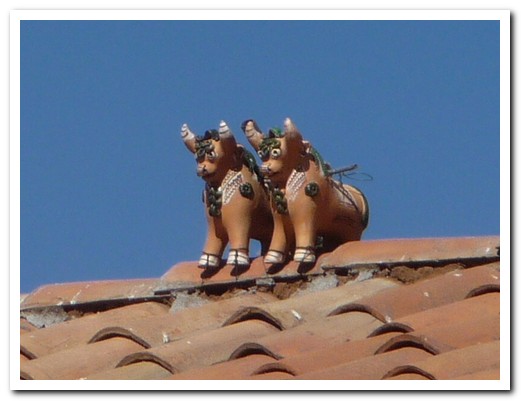
Ceramic bulls on the roof to say thank you to the Mother Earth

Iglesia de Santo Domingo built on Inca foundations
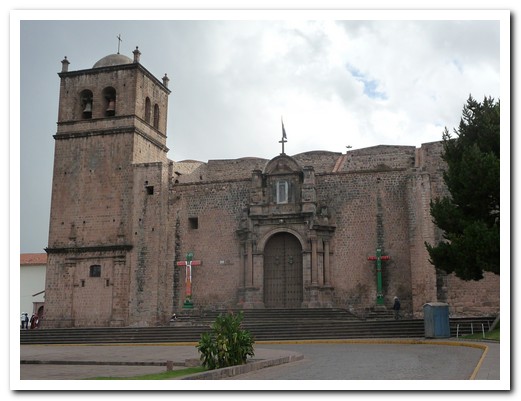
Iglesia de San Francisco

Iglesia de San Pedro
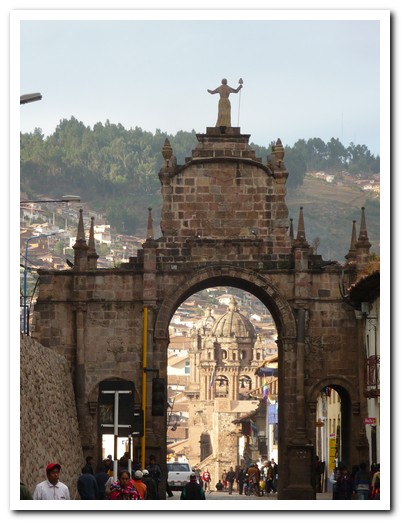
Arco Santa Clara
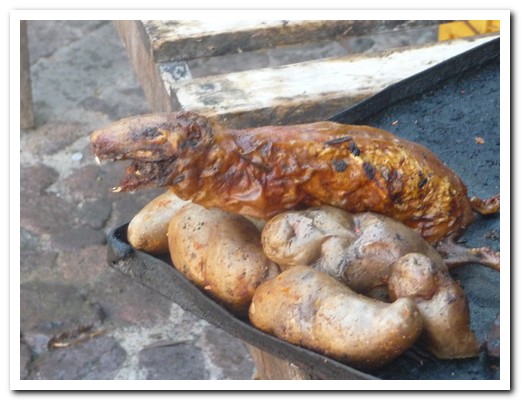
Guinea pig - a real delicacy

Hotel Los Niños
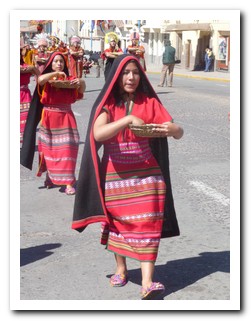

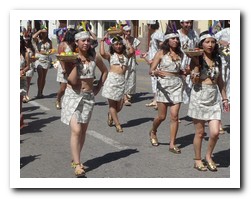
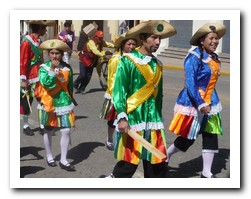
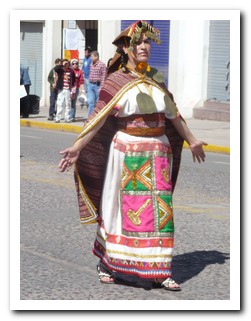
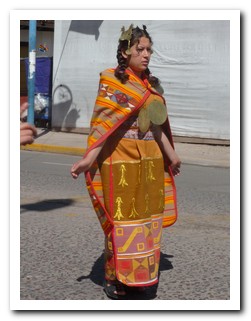
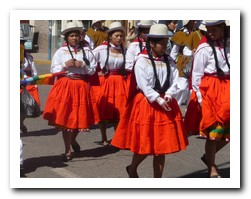
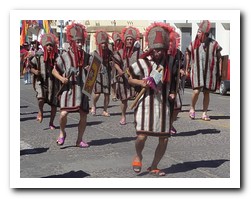
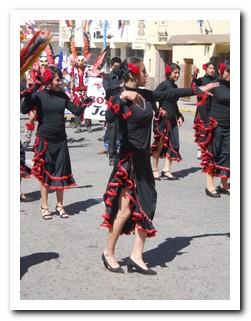
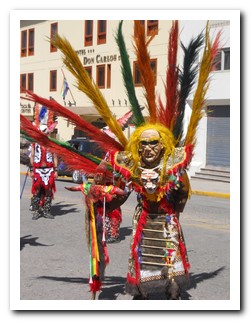
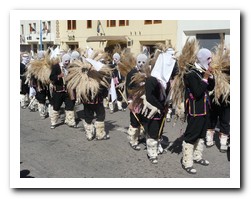
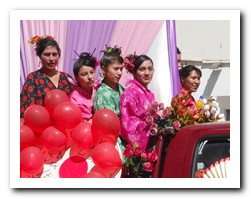
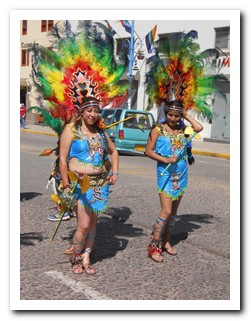
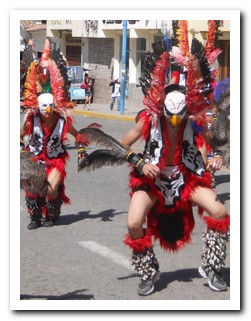

The Sacred Valley
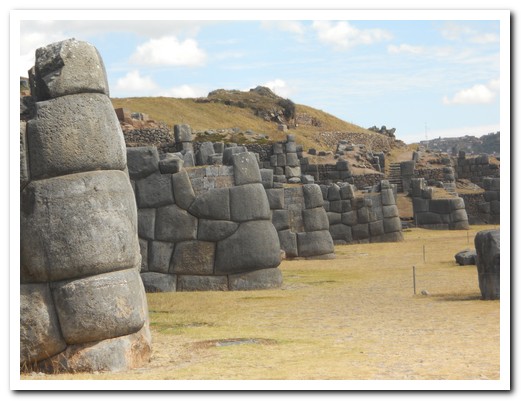
Saqsayhuamán outside of Cusco
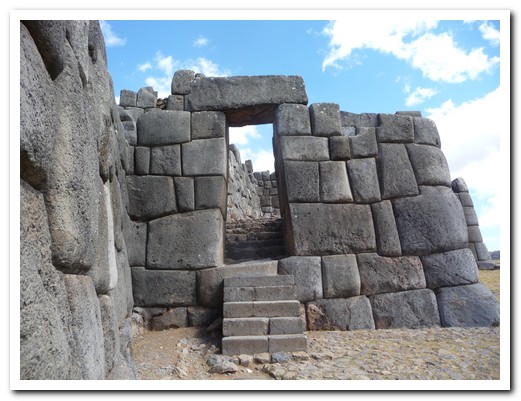
Stone doorway
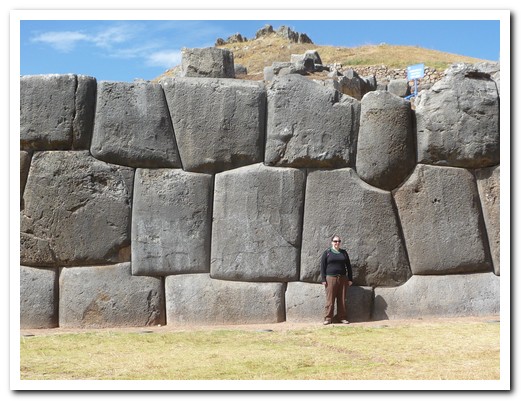
Huge stones used to make the walls
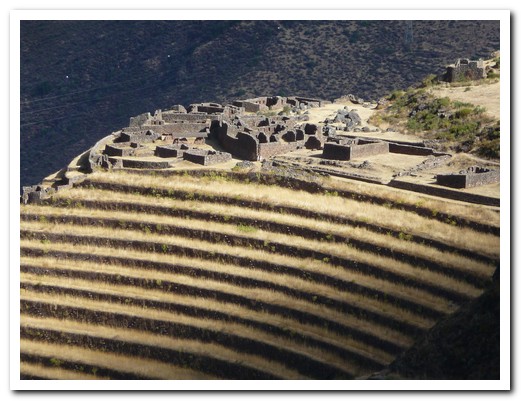
Písac and its terraces
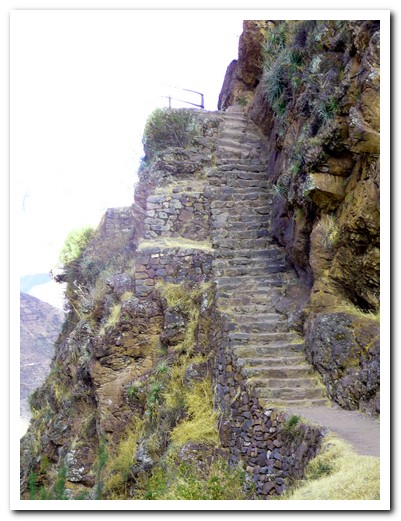
Steep stairway at Písac

Sacrificial altars at Q´engo Inca site
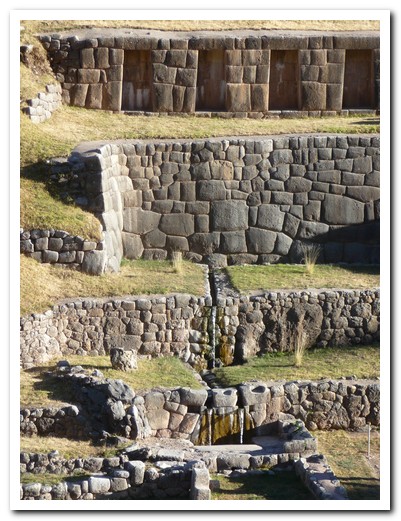
500 year old fountains still running at Tambomachay Inca site
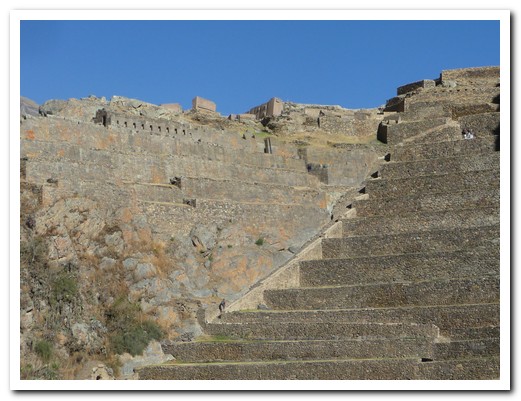
Ollantaytambo at the end of the Sacred Valley
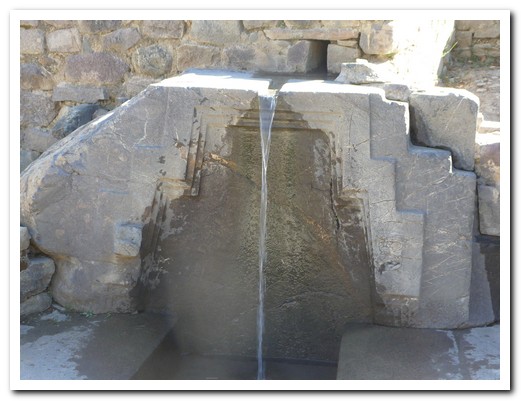
Fountain at Ollantaytambo
Lake Titicaca – Peru
21st June 2010
Our bus from Copacabana to Puno was cancelled due to a road blockage in Peru. To make matters worse, the electricity went off for the rest of the day. The only restaurant in town serving dinner by candlelight was called ¨Welcome to Puno¨, but we were still in Copacabana. Luckily we were able to get to Puno the next day to make our train.
.
Just off Puno are the 40 floating reed islands of Uros where 2000 people live. We had just enough time for an evening visit, returning to Puno after dark, the city lights reflecting across the calm water. A fine Peruvian wine complemented our Alpaca steak and puree de papa dinner.
.
From Puno to Cusco, we crossed the Altiplano in the Andean Explorer, a luxury tourist train. By 10am, a Pisco Sour in hand, we were enjoying Peruvian music played by a colourful band. A 3 course lunch with wine followed. We didn´t want it to end.
.
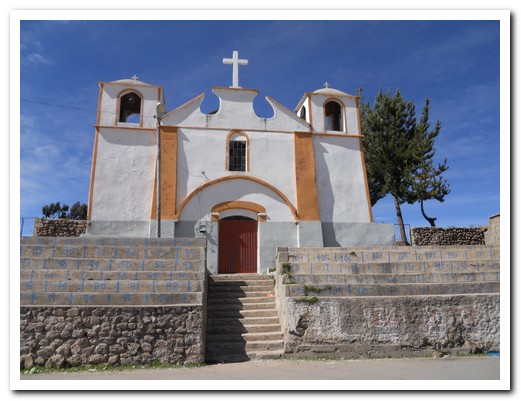
The border between Bolivia and Peru
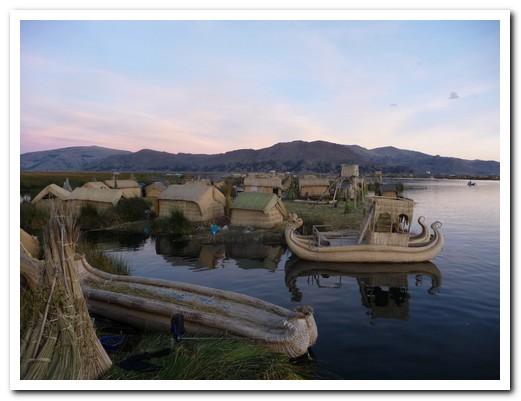
The Uros floating reed islands
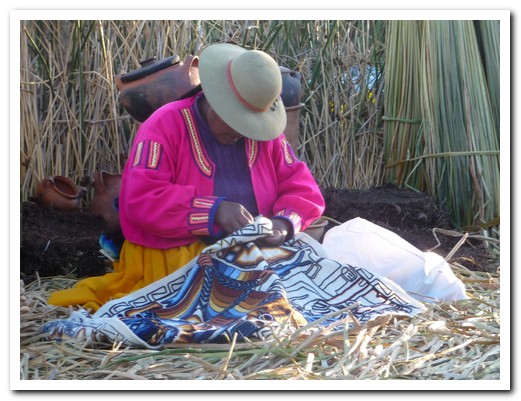
The women make beautiful cloth hangings

They tell stories of island life
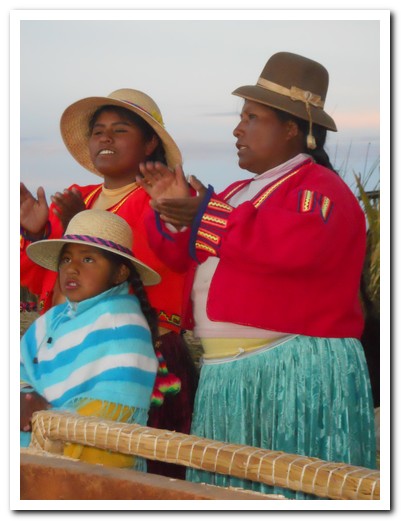
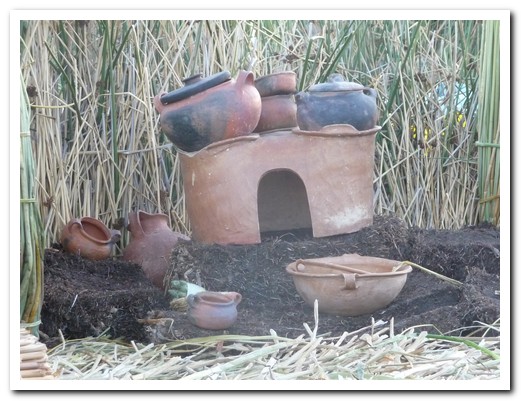
Cooking is done outside
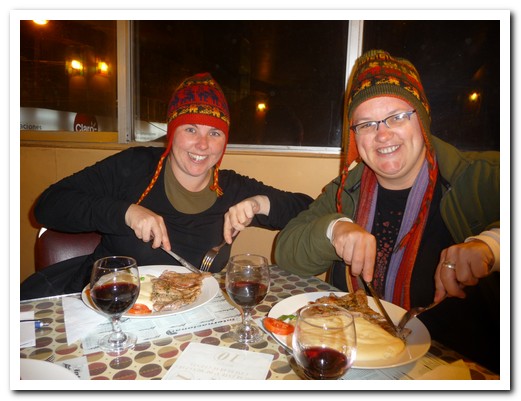
Alpaca steak for dinner
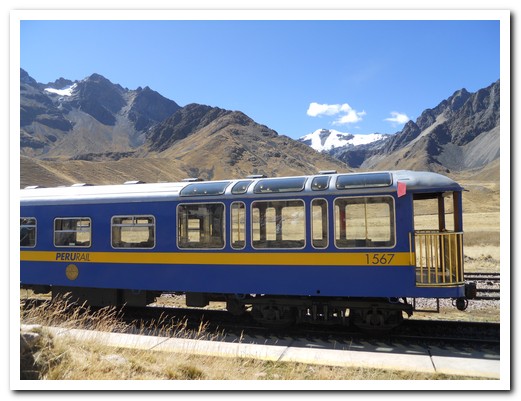
Our train to Cusco
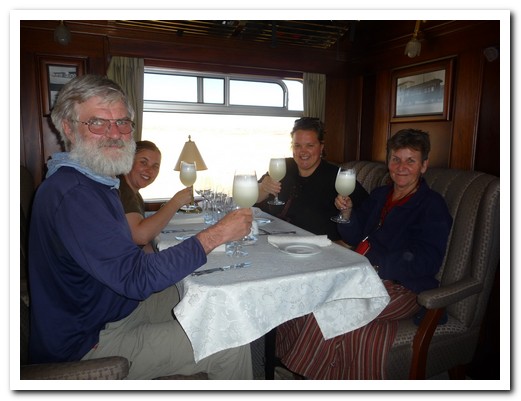
Enjoying a pre lunch Pisco Sour
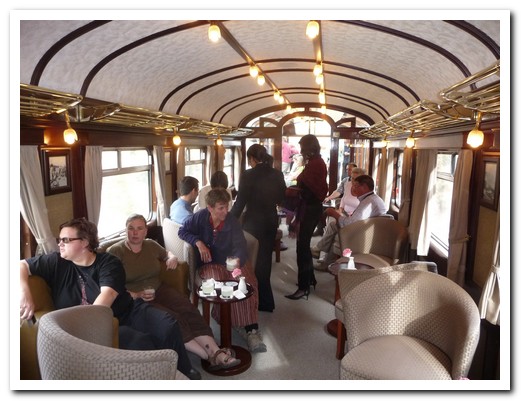
The bar carriage

A live Peruvian band on board
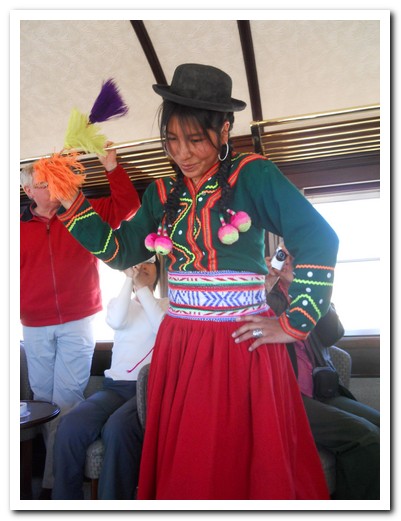
And traditional dancing
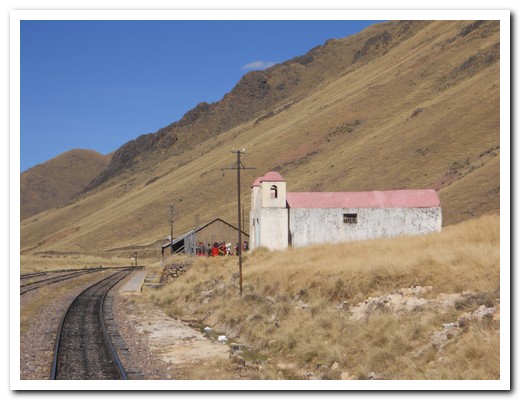
Lake Titicaca – Bolivia
20th June 2010
We arrived in the enchanting town of Copacabana, nestled between two hills on the southern shore of Lake Titicaca at 3872 metres, in time for a lovely sunset followed by a dinner of trout from the lake. The Moorish style cathedral, built between 1605 and 1820, dominates the town.
.
At 10am every day outside the cathedral, cars, trucks and buses decorated with flowers are first blessed by a priest, then sprayed with soft drink, beer, rice and flower petals. A traditional holy man then passes over them with smoke. It is quite a spectacle to watch.
.
A little over an hour away by boat is the Isla del Sol, birthplace of the Inca. We climbed to the village of Yumani on the southern end of the island where we spent the night, the views over the lake outstanding.
.
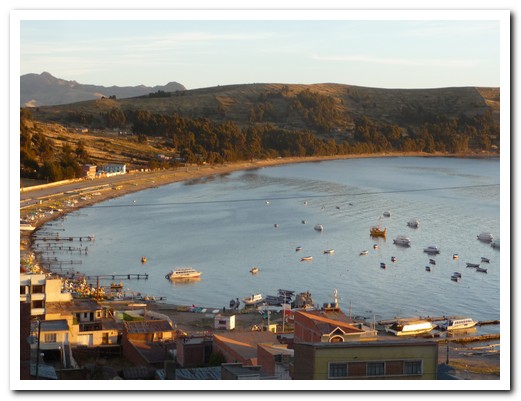
Copacabana on the shore of Lake Titicaca
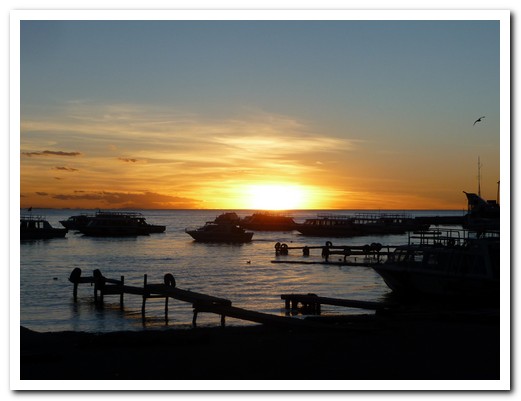
Sunset over Lake Titicaca
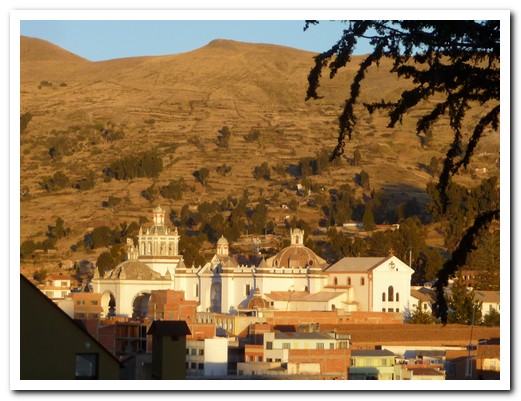
Copacabana´s Cathedral
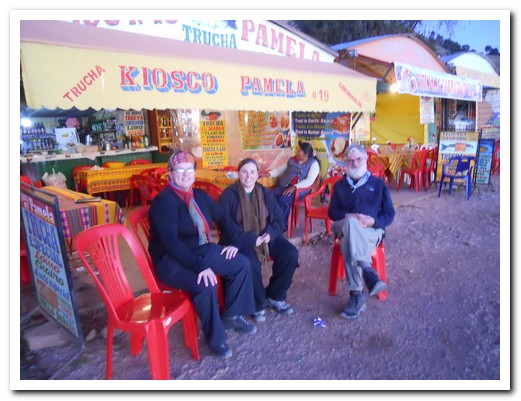
Trout dinner at Pamela´s Diner
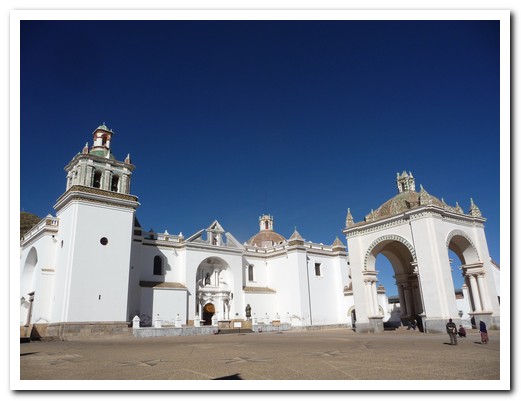
Moorish style is evident in the Cathedral
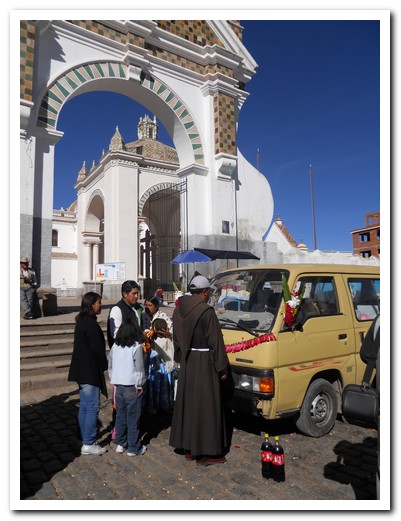
Priest blesses the car
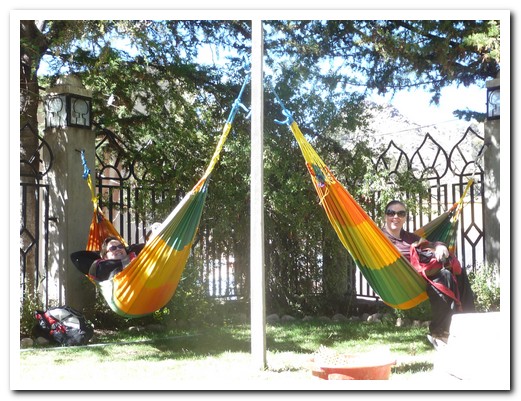
Katie and Chantelle relax at the hostel
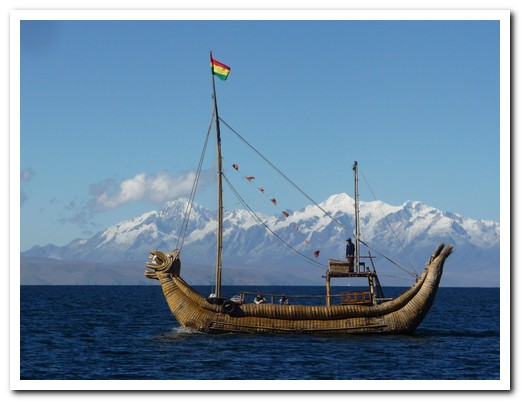
Lake Titicaca
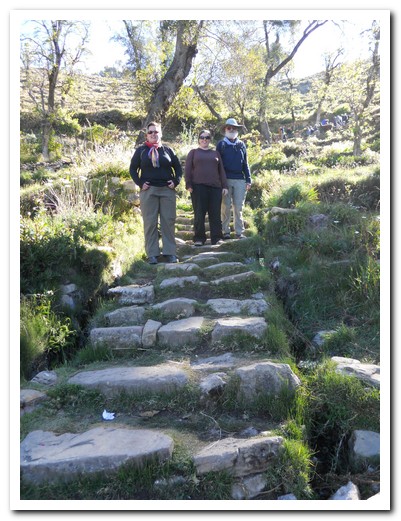
Inca Steps on the Isla del Sol
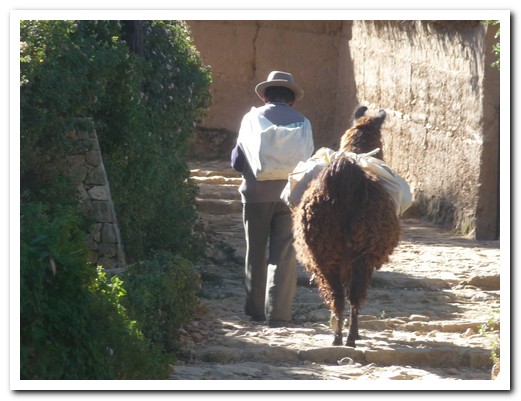
Pack llama
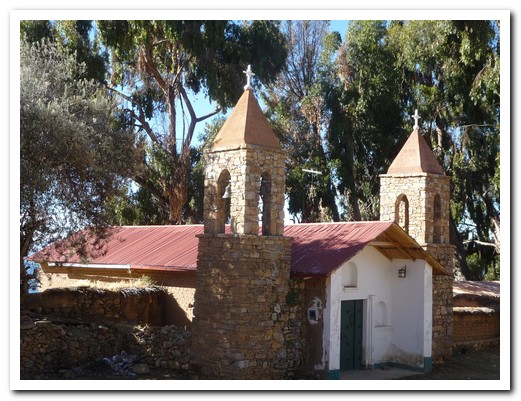
Church on Isla del Sol

Inca terraces
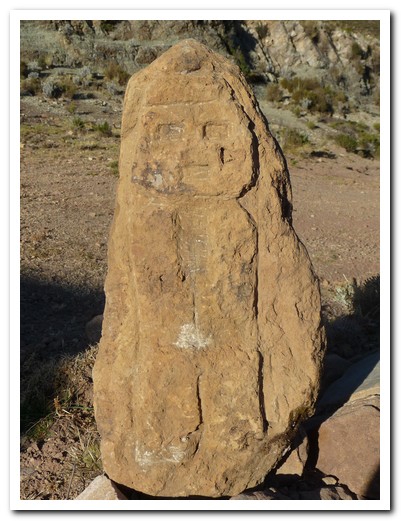
Inca stone carving
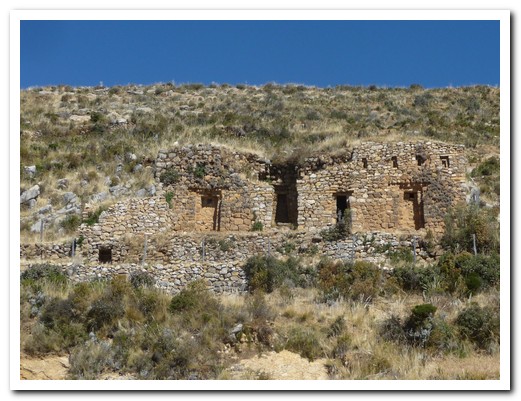
Ruins of Inca Palace on Isla del Sol
Northern Chile
13th June 2010
We returned to Chile to meet up with Katie and Chantelle. From Arica on Chile´s dry north coast, we made our way south to Iquigue through a surreal landscape of massive sand dunes.
.
San Pedro de Atacama, established in 1540, is a little oasis in the Atacama Desert, the driest in the world.
.
17 hours away by bus is La Serena, and another 7 got us to Santiago. The Spanish arrived in La Serena in 1544.
.
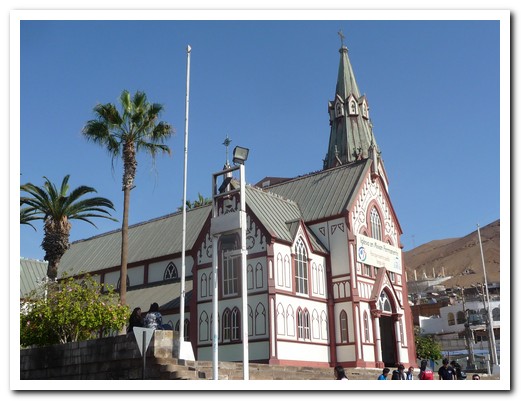
Arica´s all iron church designed by Eifel and built in Paris
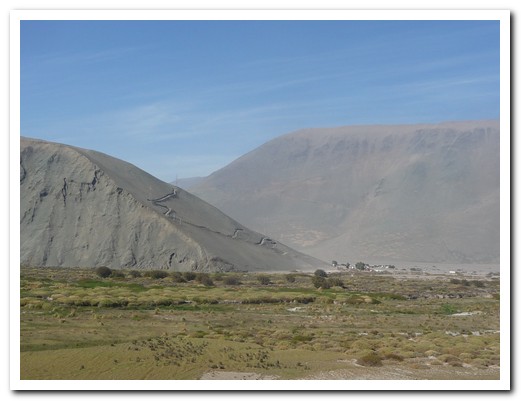
Massive sand dunes, over 1000 metres high, in northern Chile
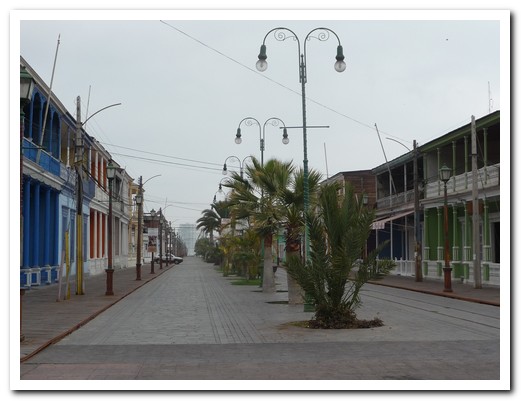
Iquique on a Saturday afternoon
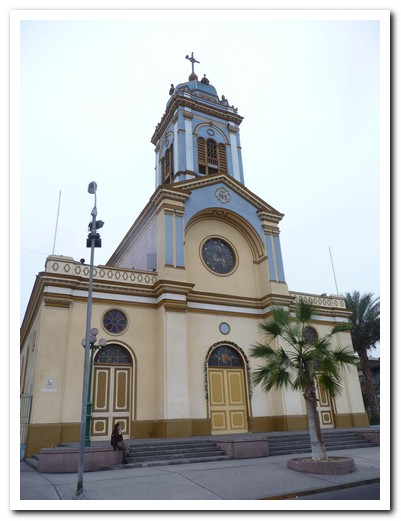
Cathedral at Iquique
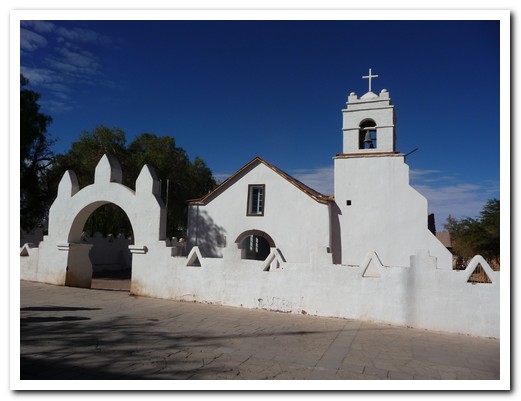
Adobe church at San Pedro de Atacama
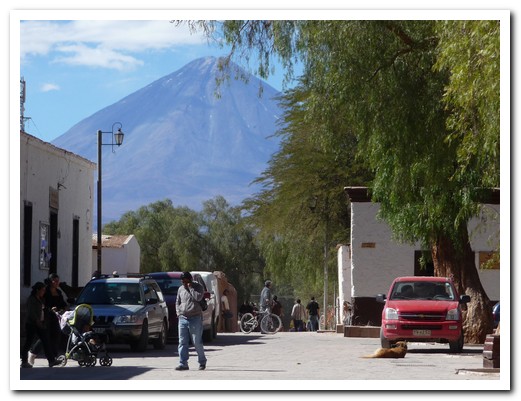
San Pedro de Atacama
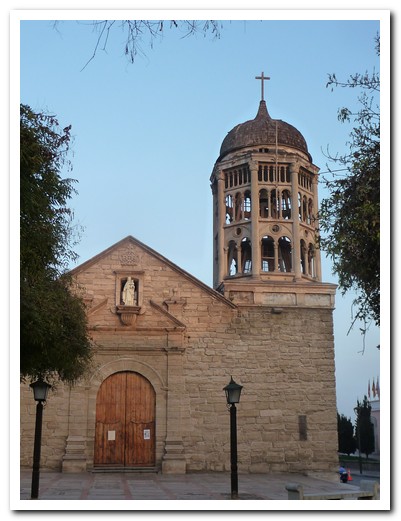
Church of Santo Domingo - La Serena
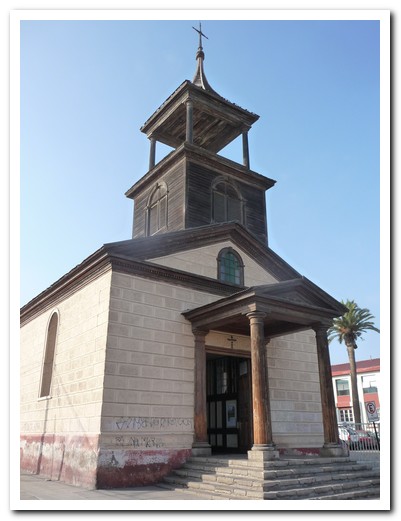
La Serena has 29 churches
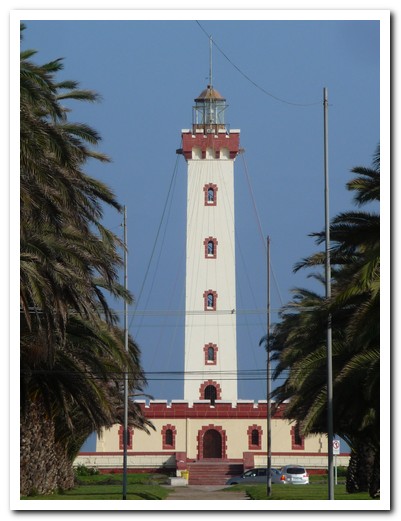
La Serena lighthouse

Dawn on Chile´s north coast
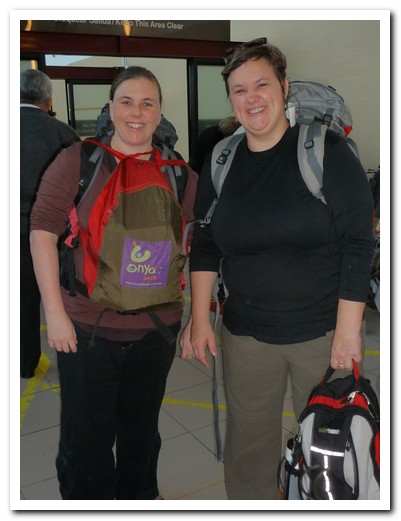
Katie and Chantelle arrive in Santiago
Sajama National Park
04th June 2010
South west of La Paz, near the border with Chile, lies Sajama National Park, Bolivia´s first. We spent 2 nights in the small pueblo of Sajama (4200 metres) below the majestic, snow capped Sajama Volcano. When the sun set behind the twin volcanos on the Chile border, the temperature dropped to well below zero.
.
Inside the park we walked in a forest of keñua trees, the highest in the world, at over 4400 metres. We cooked eggs in a bubbling geyser, ate llama, soaked in an open air hot springs surrounded by volcanos and observed llamas, alpacas and vicuñas.
.
On the way we passed many ancient Aymara funeral towers, made of adobe brick and almost always facing the rising sun in the east. Many still contain human remains.
.
A striking adobe and thatch church stands proudly above the humble dewllings in many of the local villages. The largest and best restored of these is the church of Santiago de Carangas, built between 1587 and 1608. Inside the walls and ceiling are covered in original frescoes of bible scenes in the Mestizo style.
.
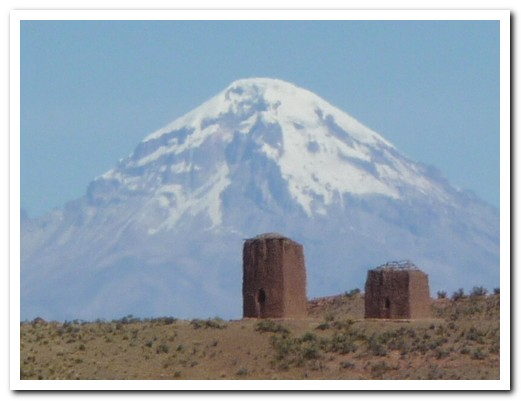
Aymara burial towers ....
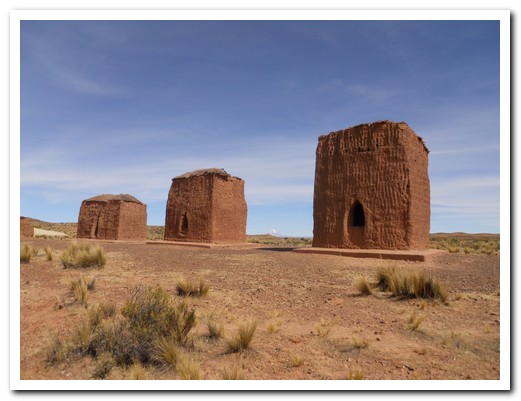
.... 800 years old

Inside the church at Calamarca are paintings of angels
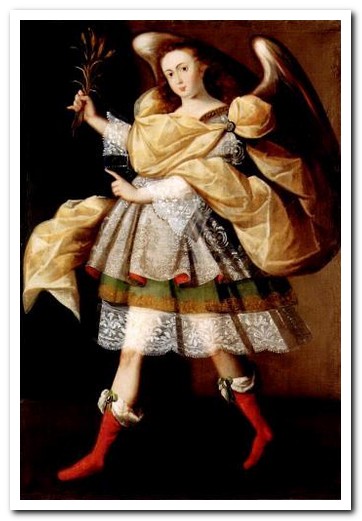
One of the angels

Crumbling adobe church at Ichiga
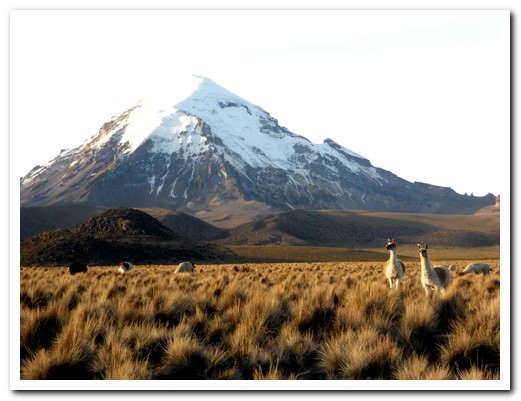
Llamas grazing at the foot of Sajama Volcano
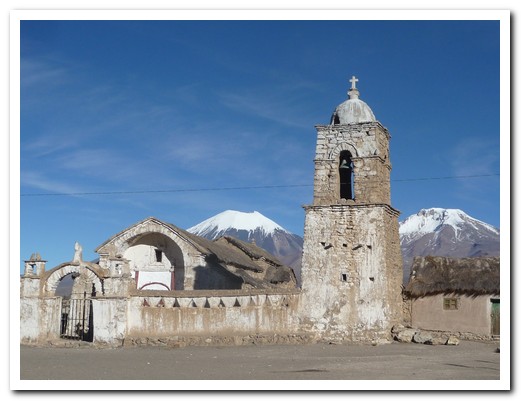
Sajama Church

Twin volcanos on the Bolivia/Chile border

Boiling eggs in a geyser at 4400 metres
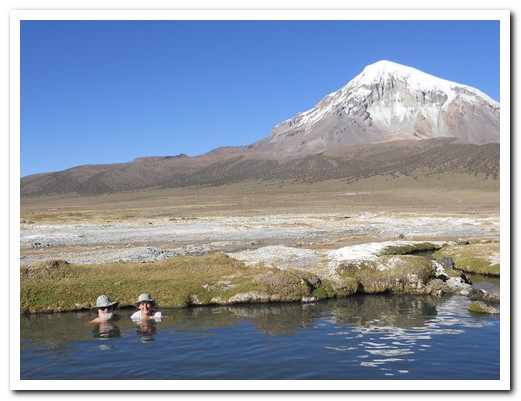
Soaking in the hot springs
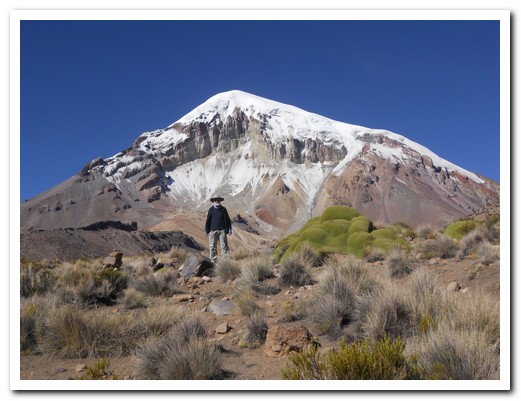
A trek to Sajama base camp
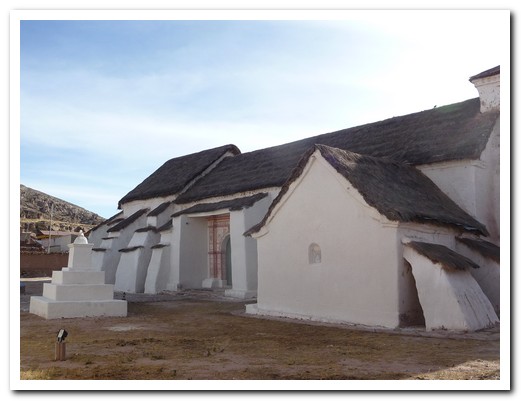
The church of Santiago de Carangas from 1587
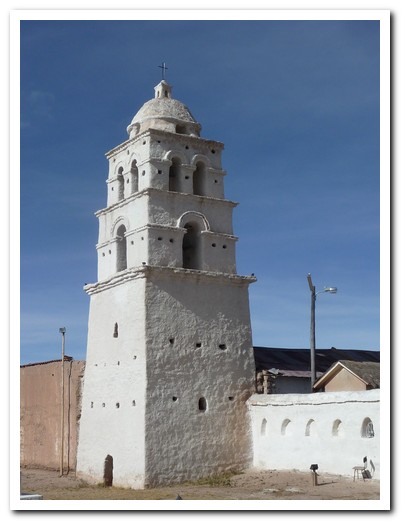
Its bell tower
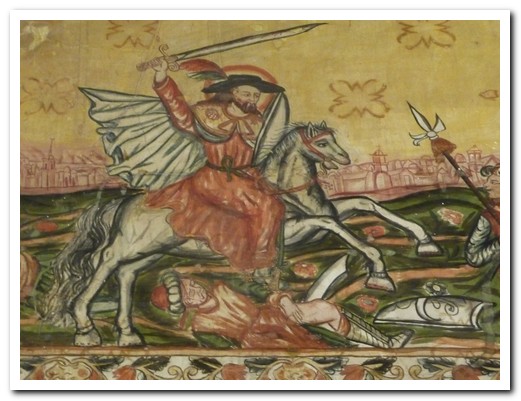
Inside mural of Santiago Matamoros (The Moor slayer)
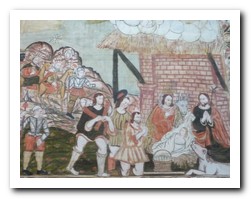
Bible scenes ....
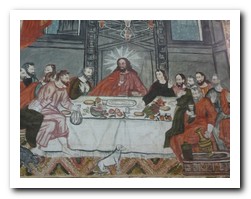
.... painted 300 years ago

A chapel at Curahuara de Carangas
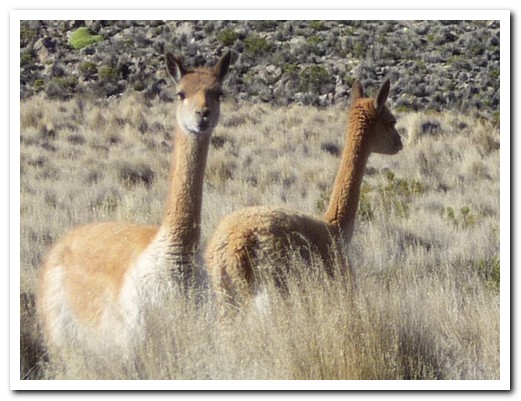
Vicuñas
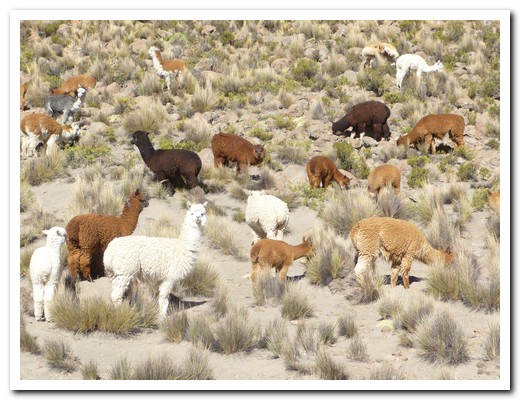
Multi-coloured Alpaca herd
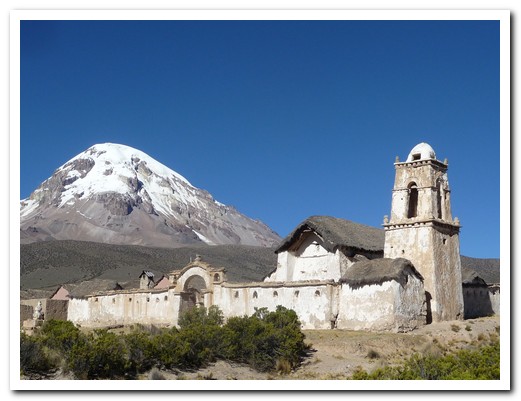
Church at Tomarapi village

Llama going to market in style